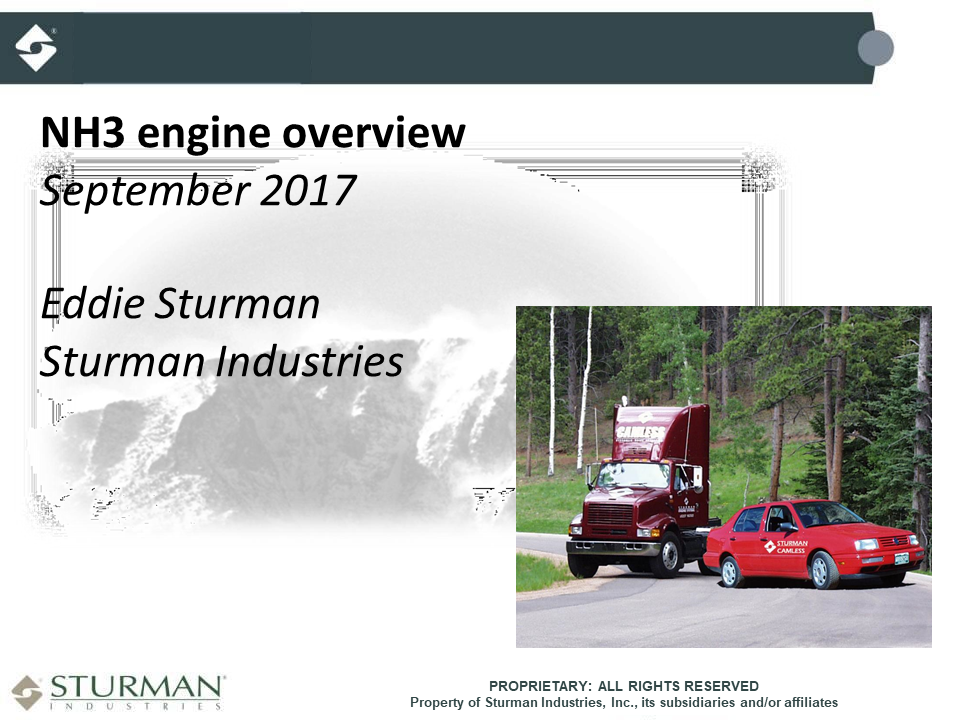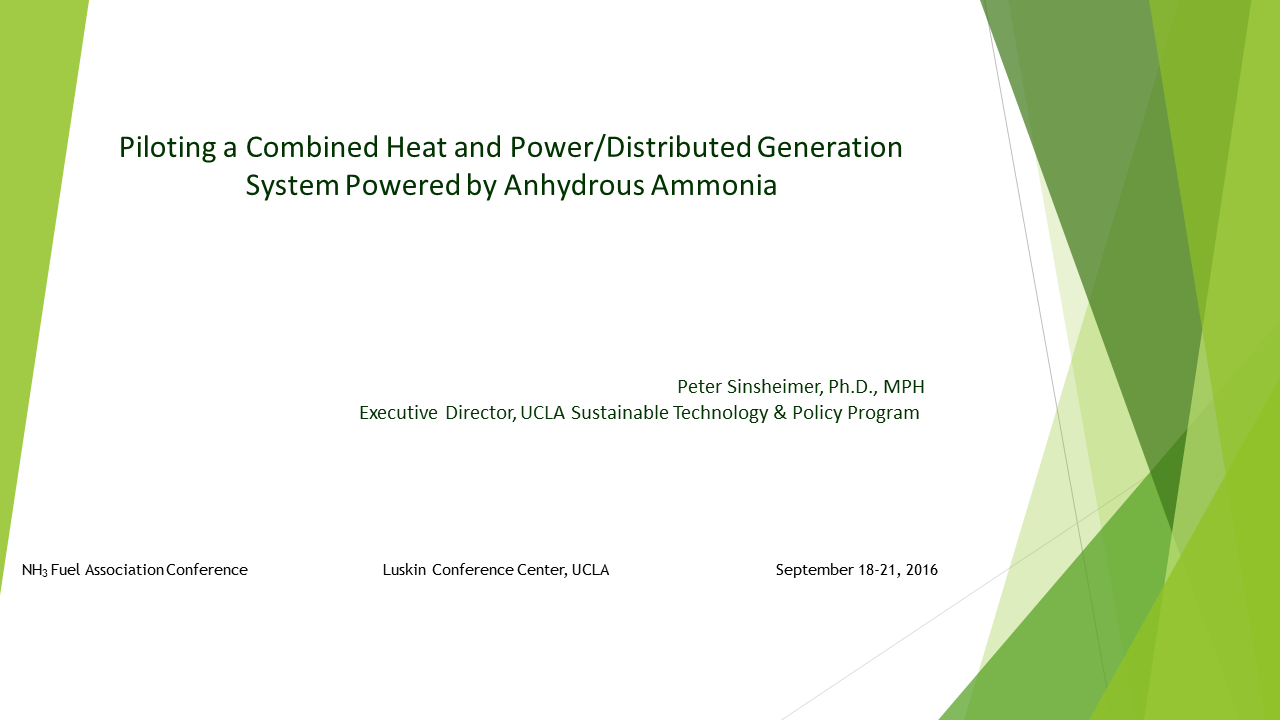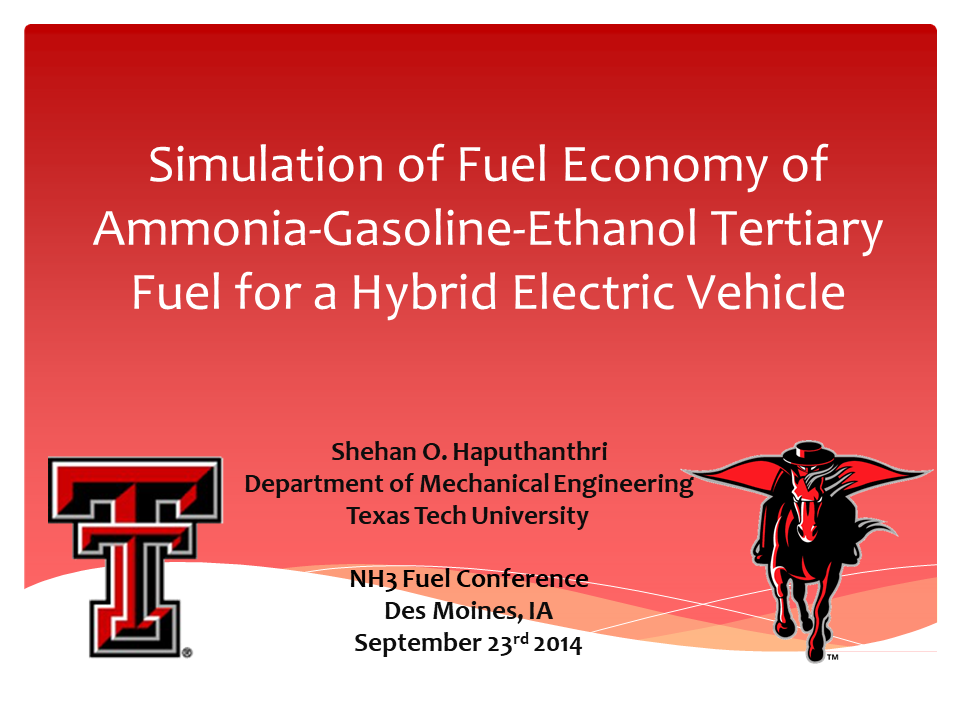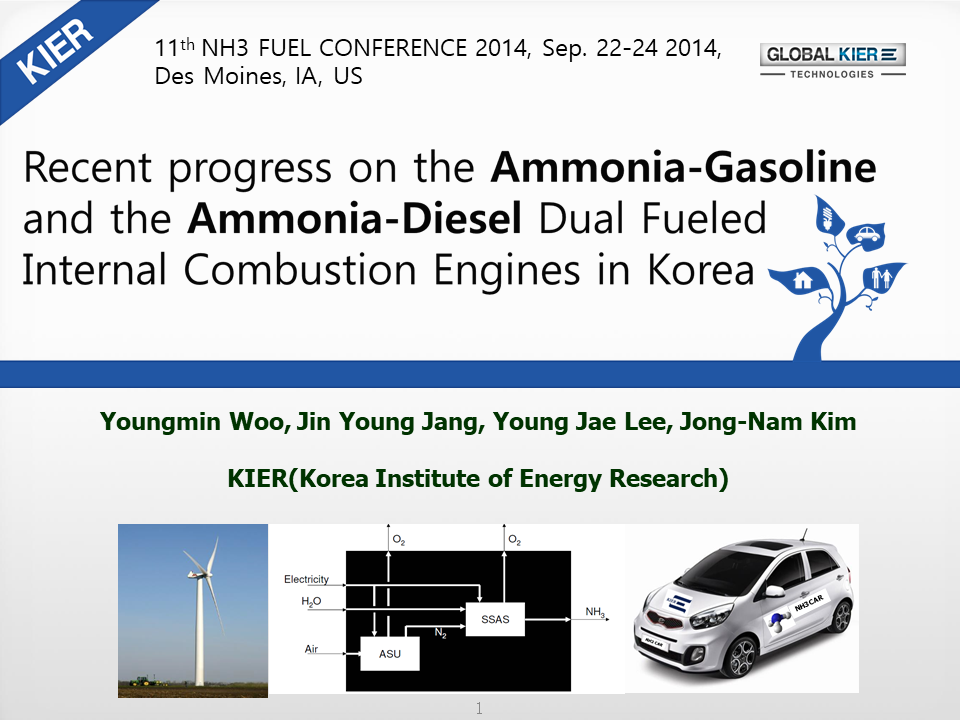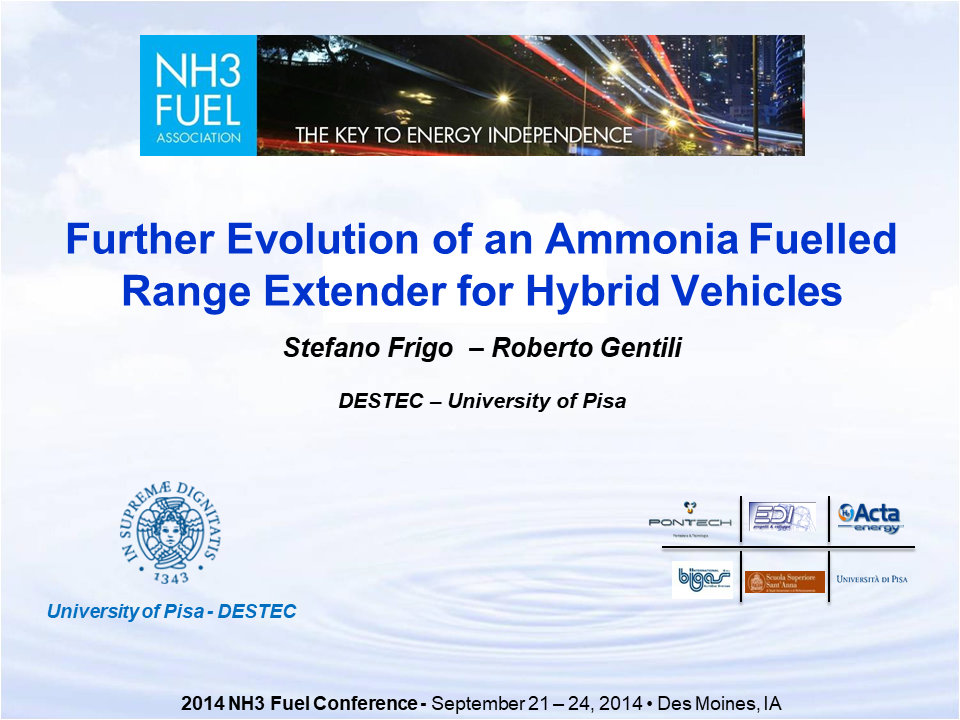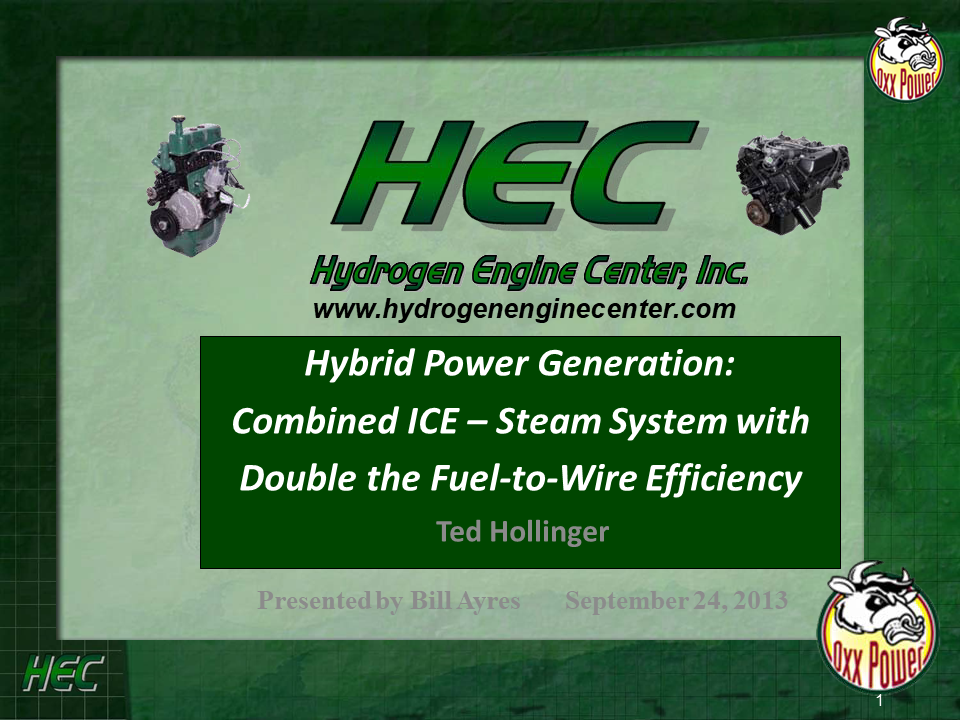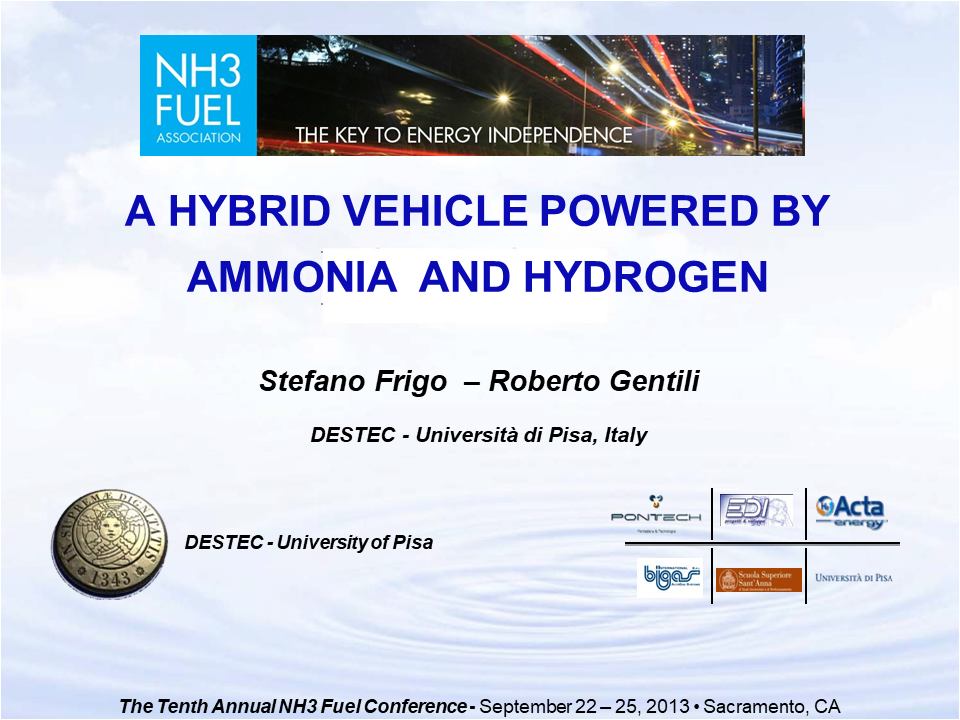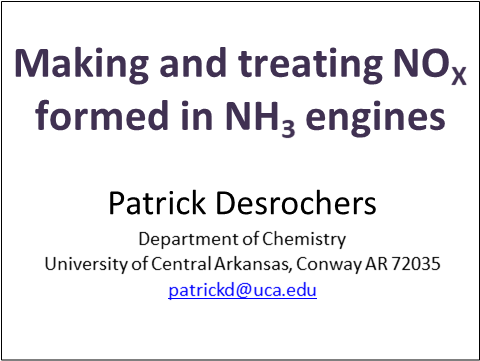UCLA-STPP is an interdisciplinary science / policy research unit, enjoining faculty in schools of engineering, public health, law, business, and medicine. The two-part mission of UCLA-STPP is to: (1) evaluate the viability of safer, cleaner, greener, more sustainable substitutes for existing hazardous services, processes, systems, and/or technologies, and (2) employ diffusion analysis to identify institutional, policy, and regulatory barriers to the adoption of viable safer substitutes and prescribe policy changes to overcome key barriers. UCLA-STPP has taken leadership in developing and institutionalizing “alternatives analysis” as policy/regulatory tool as a method to evaluate and identify safer, cleaner, greener, more sustainable substitutes.…
Ammonia Engine
Presentation
NH3 emulsions in internal combustion engines
NH3 emulsions in internal combustion engines Shehan Haputhanthri, Texas Tech University
Presentation
Simulation of Fuel Economy of Gasoline-Ethanol-Ammonia Tertiary Fuel Blends for a Series Hybrid Electric Vehicle
With the depletion of petroleum resources around the world, a need to have cleaner and fuel efficient automotive technologies and alternative fuel sources has become prominent. Hybrid electric vehicles and sustainable energy sources have gained a high momentum in fulfilling this requirement. To satisfy both needs ammonia, which has been used for a long period of time as a sustainable and carbon free transport fuel can be combined with hybrid electric vehicles. Ammonia when blended with gasoline can be used as an alternate fuel to power existing internal combustion engines. Such blends similar to ethanol-gasoline fuel blends would provide a…
Presentation
A High Efficiency NH3 fueled Diesel Engine
A High Efficiency NH3 fueled Diesel Engine Eddie Sturman, Sturman Industries, USA
Presentation
Recent progress on the Ammonia-Gasoline and the Ammonia-Diesel Dual Fueled Internal Combustion Engines in Korea
Both a spark ignition engine and a compression ignition engine are considered to use ammonia as primary fuel in this study. First, in a spark ignition engine, an ammonia-gasoline dual fuel system was developed and both ammonia and gasoline are injected separately into the intake manifold in liquid phase. As ammonia burns 1/6 time slower than gasoline, the spark timing is needed to be advanced near 40 degree before top dead center. The test engine showed quite high variation in the power output with ammonia supply more than 70% of the total heat value. As a result, 70% of gasoline…
Presentation
Further Evolution of an Ammonia Fuelled Range Extender for Hybrid Vehicles
In a previous research the possibility to run a small 4-stroke twin-cylinder SI engine of 505 cm3 with ammonia plus hydrogen was demonstrated. Ammonia and hydrogen tanks were utilized to feed the engine while, apart, the suitability of a custom-designed catalytic reactor to produce hydrogen from ammonia with the required flow rate was verified as well. The experimental activity confirmed the need to increase combustion velocity by adding hydrogen to air-ammonia mixture, with energy ratios that mainly depend on load and less on engine speed. The minimum hydrogen to ammonia energy ratio was found below 6% at full load and…
Presentation
NH3 Fuel Progress at Hydrogen Engine Center
NH3 Fuel Progress at Hydrogen Engine Center Ted Hollinger, Hydrogen Engine Center
Presentation
A Hybrid Vehicle Powered by Hydrogen and Ammonia
A partnership of Research and Industry entities has developed a fully working hybrid electric vehicle equipped with a 15 kW IC engine fuelled with liquid ammonia as a range extender of the lithium batteries pack on board. The entire vehicle powertrain (ie, the IC engine, the electric generator coupled with the engine, the electric motor, the electronics etc.) has been studied and designed. Regarding the IC engine, as is known, ammonia combustion is characterized by a high activation energy and a low flame velocity, therefore a small amount of hydrogen is requested as igniter and combustion promoter. The necessary amount…
Presentation
Making and Treating NOx formed in NH3 Engines
Ammonia has real promise as a green renewable fuel; however its use is not without some of the drawbacks endemic to high temperature combustion processes. Chief among them is the potential for NOx formation in nitrogen-rich oxidizing environments. Nitric and nitrous oxides are prime culprits that plague both entrenched hydrocarbon internal combustion technology but also emerging technologies like ammonia-as-a-fuel. Nitric oxide is implicated in photochemical ground-level ozone production in urban areas. Nitrous oxide is its own double-edged environmental sword, being both a potent tropospheric green-house gas as well as a principle agent in renewed stratospheric ozone-depletion (Science 2009, v326, p.…
